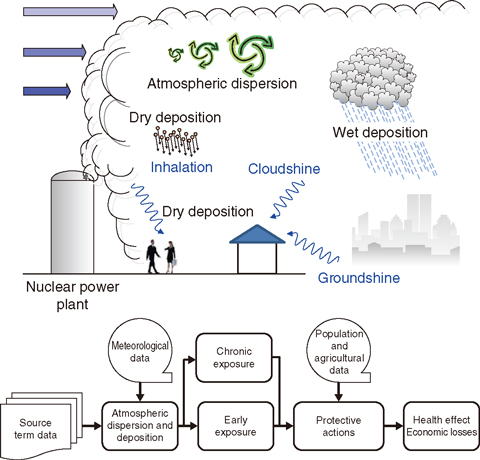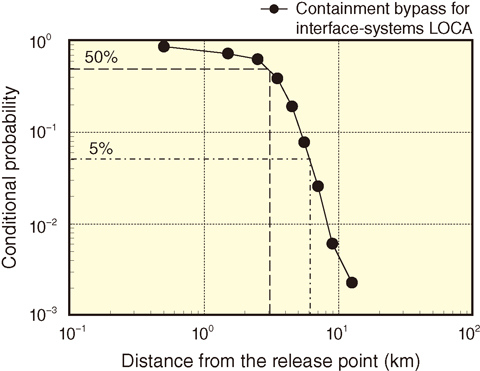
Fig.2-8 Probabilistic accident consequence assessment code OSCAAR

Fig.2-9 Example of evaluation results for a PAZ
The International Atomic Energy Agency (IAEA) suggested a precautionary action zone (PAZ) as a new concept for protective action zones in the case of a nuclear emergency. The PAZ is the area in which urgent protective actions (e.g., sheltering or evacuation) should be implemented before the release of radionuclides to prevent the risk of severe deterministic effects such as early death. However, the IAEA only showed the basic concept and the suggested size for the PAZ. A method for evaluating the size of the PAZ on a scientific basis needs to be introduced to Japan.
In this study, the size of the PAZ for accident scenarios was evaluated in terms of received dose using a Level 3 probabilistic risk-assessment (PRA) code, the OSCAAR (Fig.2-8). Accident scenarios were identified through a Level 2 PRA analysis for boiling water reactor (BWR) and pressurized water reactor (PWR) plants.
First, representative accident scenarios were selected in light of their frequencies of occurrence, release fractions of radionuclides, and time before release related to the implementation of the protective action. Next, the absorbed doses to red marrow, which cause severe deterministic effects, were calculated for the selected accident scenarios. The consequences of a given accidental release at a given location varied with meteorological conditions. The doses were evaluated for 8760 possible weather sequences considering one year’s worth of meteorological data. The doses were calculated at each region with an (r, θ) grid system centered on the release location, and then, representative values of calculated doses at each distance from the release point were selected from the maximum values for the residential region in the corresponding annulus. After that, using the evaluation results for the doses under all possible weather sequences, the conditional probability of a weather occurrence exceeding the dose criterion of 1 Gy was calculated at each distance. Finally, the probabilistic distribution of a weather occurrence exceeding the dose criteria at each distance was shown in the form of complementary cumulative distribution functions, and the size of the PAZ was evaluated in light of the conditional probability for the weather occurrence.
Fig.2-9 shows the relation between the distance from the release point and the conditional probability of a weather occurrence exceeding the dose criteria in the case of the containment bypass for the interface-systems’ loss-of-coolant accident (LOCA) scenario at the BWR plants. The distances above the 50th and 5th percentile values for a weather occurrence are evaluated to be approximately 3 and 6 km, respectively. Consequently, the size of the PAZ is estimated to be 3-6 km, and the specific evaluation method has been clarified on a scientific basis.